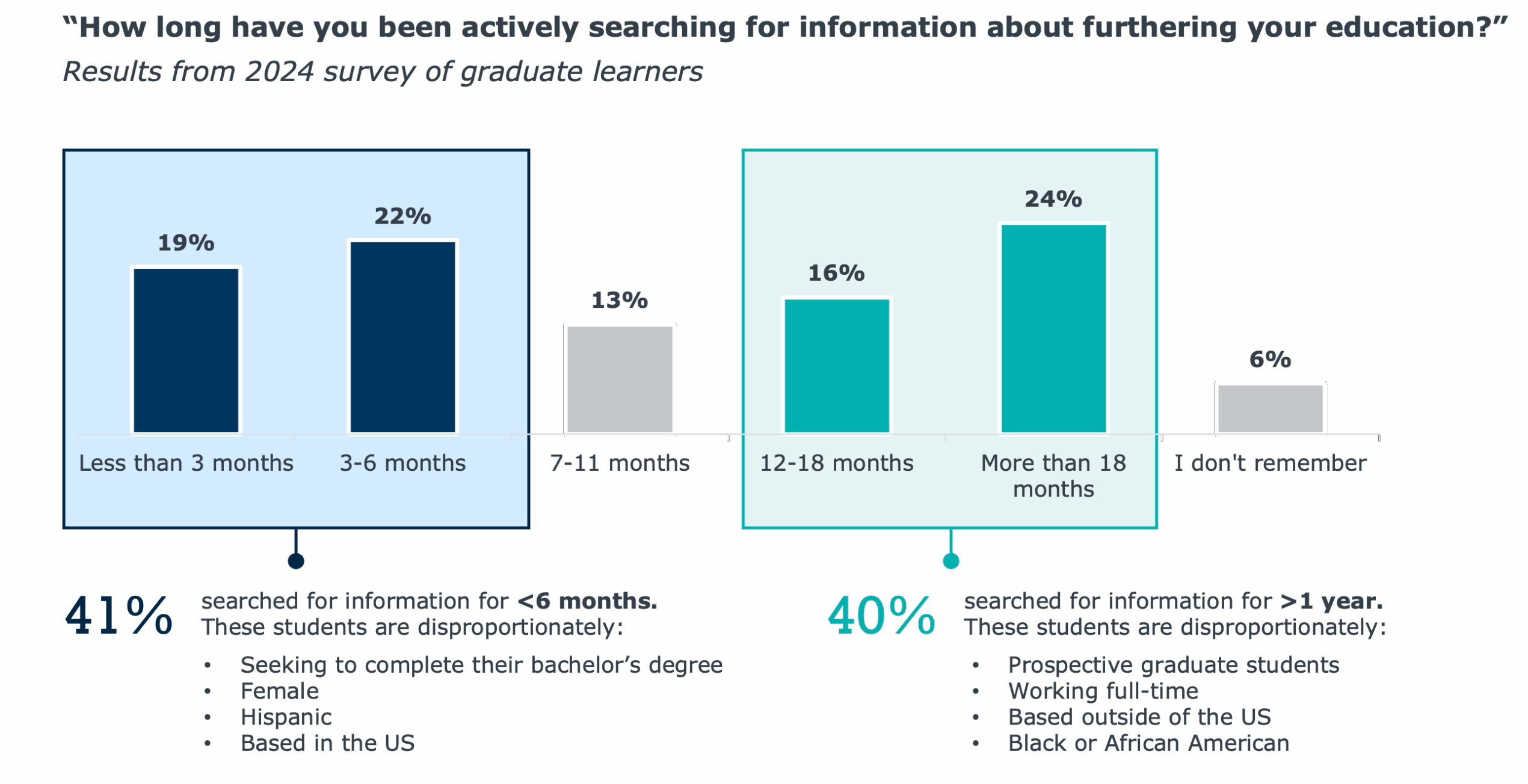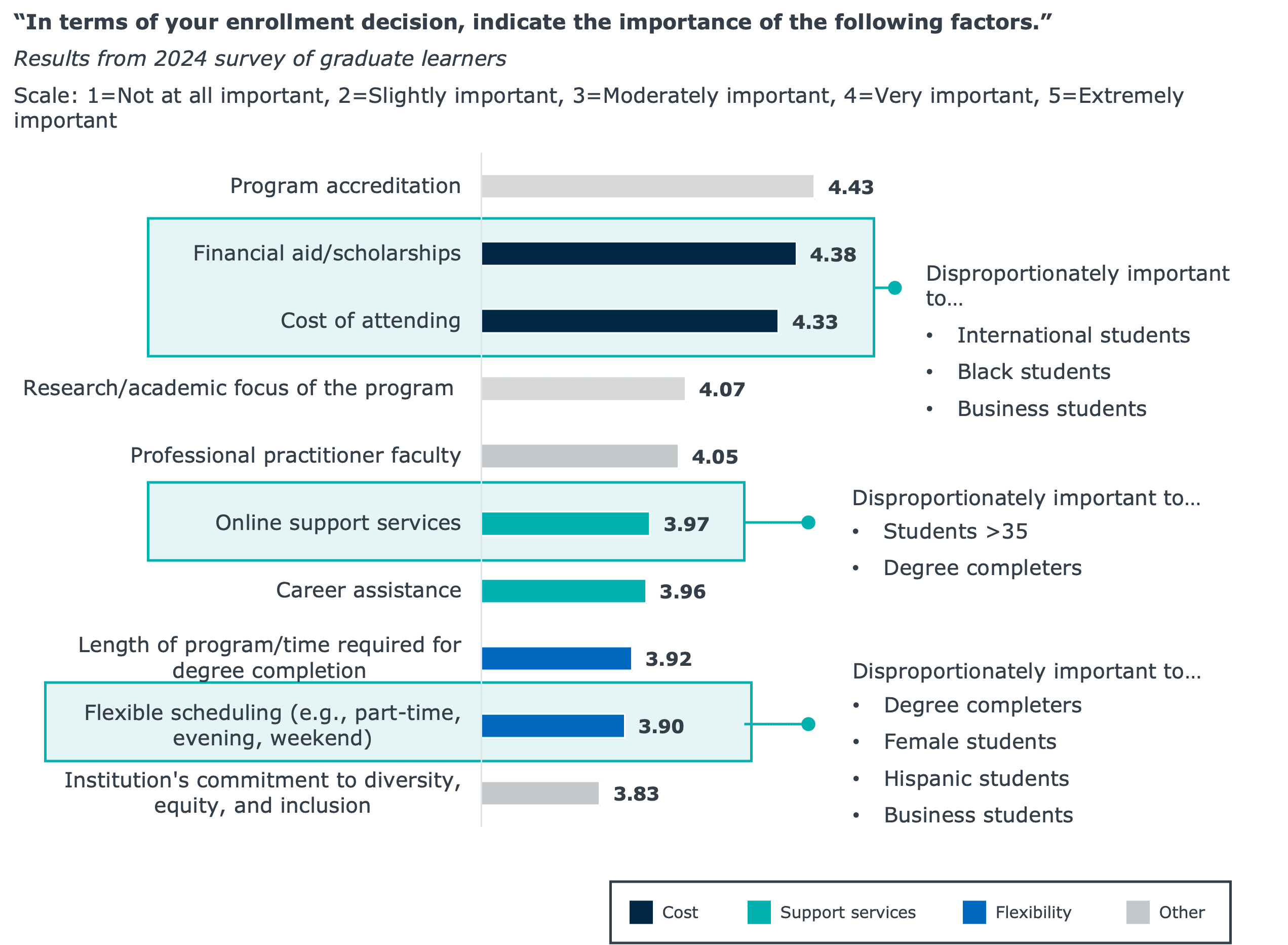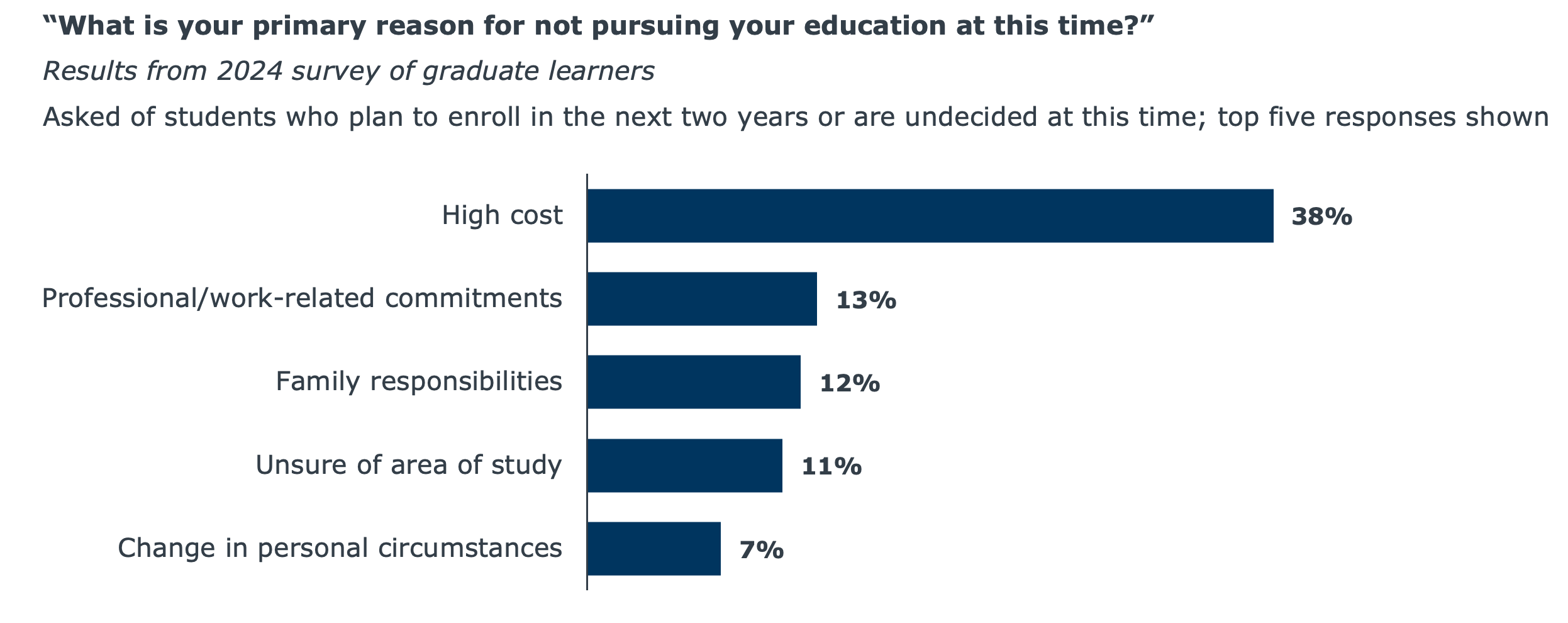Graduate vs. undergraduate enrollment: A guide for VPEMs who manage both
In my conversations with VPEMs lately, I hear the same thing again and again: “I know how to recruit undergrads—but grad is a whole different ballgame.” It’s true. Managing both pipelines requires more than just duplicating what works for 18-year-olds. So, I asked my colleague Beth Donaldson (herself a former VPEM) to join me for a conversation on what it really takes to lead successful enrollment operations for both audiences, and where most leaders get tripped up.
MR: Beth, what advice would you give to a VPEM who is taking on graduate enrollment operations for the first time?
BD: My biggest piece of advice is to prioritize relationship-building. Meet one-on-one with deans and faculty to understand their goals, then continue checking in regularly. Unlike undergraduate admissions, where targets and resources are often predefined, graduate recruitment requires more collaboration and justification. You’ll need to become a strong facilitator, balancing institutional goals with student expectations and faculty perspectives. Graduate students are focused on return on investment, looking for career advancement and salary gains. Helping faculty understand and meet those expectations is key.
Ultimately, there’s a real opportunity for VPEMs to expand their skill set. In fact, you may find lessons from graduate recruitment, especially around ROI, can strengthen your undergraduate strategies, too.
MR: As VPEMs begin to manage graduate admissions, are there any common mistakes that you notice?
BD: A common mistake is approaching graduate admissions with a one-size-fits-all strategy. Each program often requires a unique approach based on its audience, goals, and industry needs.
The biggest risk, though, is over-reliance on a single enrollment source. For example, some institutions build an entire program around one corporate partner, and when that partner shifts direction, the pipeline collapses. A diversified strategy is essential.
MR: How do recruitment strategies need to evolve when you’re marketing to graduate students versus to undergraduate students?
BD: When recruiting graduate students, enrollment teams need to account for a much longer and less linear decision process. While undergraduates tend to follow a predictable timeline, graduate students often move in and out of the funnel. On average, the recruitment window can be 24 to 36 months, so you need to engage them early, consistently, and over time.

Review the Full Survey Findings
There’s also a growing overlap in mindset. Undergrads are starting to care more about outcomes and return on education, something we’ve long seen with graduate students and other adult learners. But for grad students, you really have to lean into messaging about support services. They often spend more time talking themselves out of enrolling than getting excited about the benefits. This tells us that your recruitment strategy needs to include clear, proactive messaging about how your institution will support them and help them succeed while enrolled in your program.

MR: One thing we talk about a lot in the enrollment management space is how marketing messages need to be personalized. Is it any easier to do that at the graduate level since the volume of prospects is typically lower?
BD: You’re right that lower volume makes it easier to personalize in theory. But in practice, it can be harder because the information is scattered across different systems and the journey to enrollment is more complex for graduate students than at the undergraduate level. That’s a big challenge for VPEMs trying to streamline communication.
One strategy we recommend is assigning admissions staff to specific programs so they can act as liaisons to the department and college. That way, they can learn the program details, understand what makes each one unique, and tailor outreach accordingly. Over time, they become an extension of the faculty, which makes it much easier to craft personalized, relevant messages for prospective students.
Your Guide to Hyper-Personalized Enrollment Marketing
MR: How do you differentiate branding for undergrad and grad programs while remaining true to your university’s brand?
BD: A helpful framework is what we call the “golden triangle” of program design: speed to completion, affordability, and flexibility.
The Golden Triangle of Attractive Program Design

At the same time, you do not want to lose sight of what makes your institution strong. Academic rigor, research opportunities, internships, and the overall student experience still matter to graduate students. In fact, experiential learning is becoming increasingly important. It may not always be top of mind for a VPEM, but it is something prospective graduate students are actively looking for.
MR: Earlier, you mentioned the importance of a good return on investment. What are some financial aid strategies that work on the undergrad side verses those that work in the grad market—are they the same?
BD: On the graduate side, financial aid strategy feels 15 years behind undergrad. We’re starting to see more institutions use aid as a lever for strategic growth. For example, if a program is already at capacity, it probably doesn’t need scholarship dollars to drive enrollment. But for programs with room to grow, offering funding, especially to cost-conscious graduate students, can make a real difference.

One approach that works well in the graduate market is offering clear, transparent discounts. Unlike undergrad, where aid is typically framed as merit or need-based scholarships, graduate programs are often more direct. You might see a 20 percent tuition discount for school district employees or a 15 percent discount for corporate partners. That kind of pricing transparency resonates with graduate students.
MR: Do you have any final thoughts for someone who’s just beginning to manage recruiting both undergrad and grad students?
BD: Know what resources are available to help you. EAB’s Adult Learner Recruitment team shares research and data specific to growing graduate enrollment regularly, from how to build a graduate enrollment management strategy to understanding the needs and wants of grad students.
EAB partnerships can be especially valuable for new VPEMs or those expanding their responsibilities. If you’ve been given this assignment, it’s because you’re a strong enrollment leader. But even the most experienced undergrad leaders should recognize that managing graduate enrollment involves new dynamics and different challenges. Be open to learning, and don’t be afraid to ask for help.

More Blogs

What changed in the graduate lead gen landscape in 2025

We secret shopped 40 graduate programs’ lead nurturing campaigns. Here’s what we learned.
